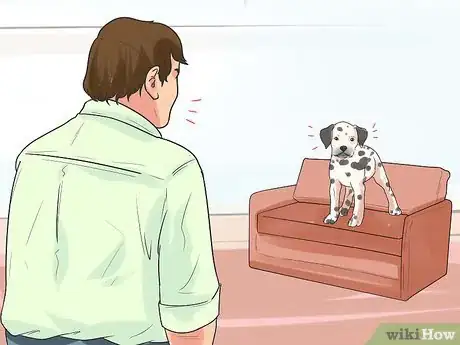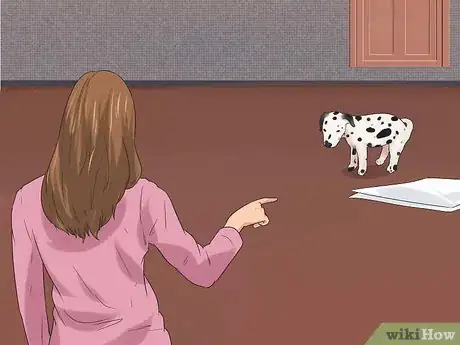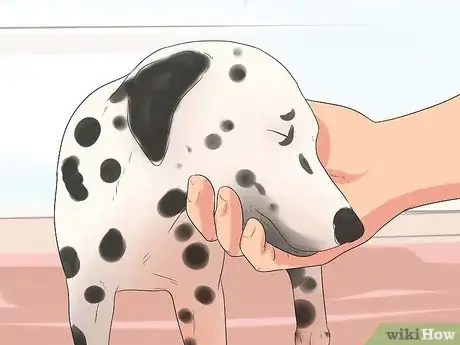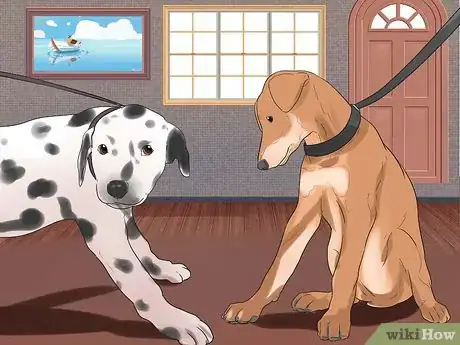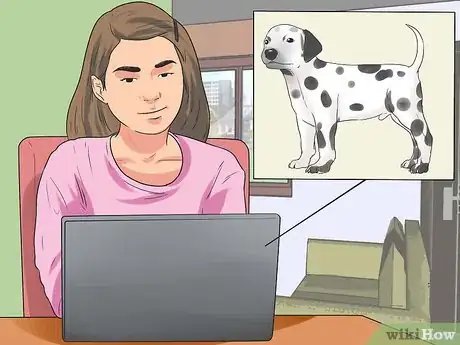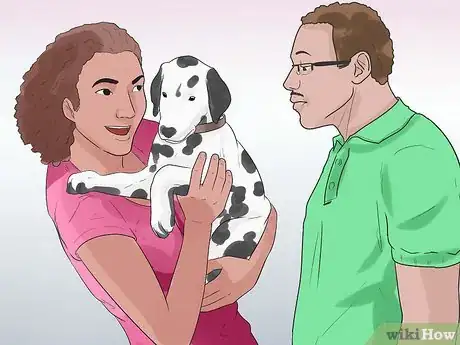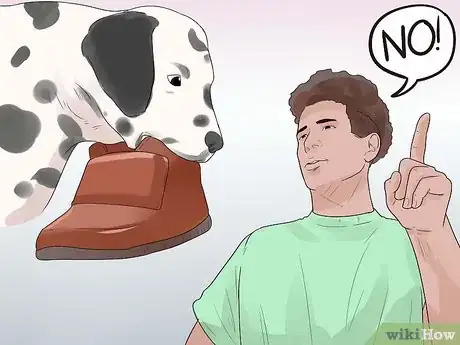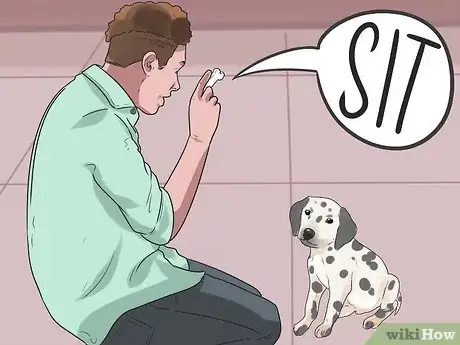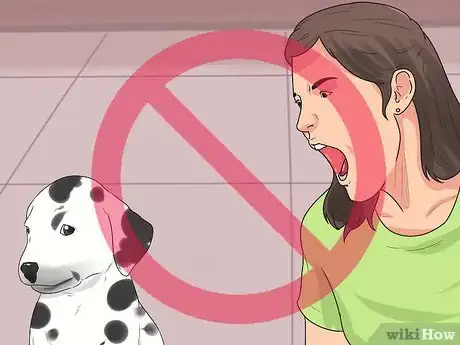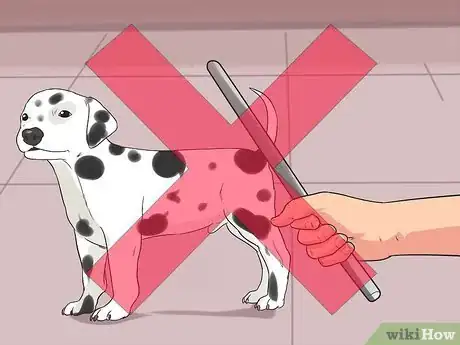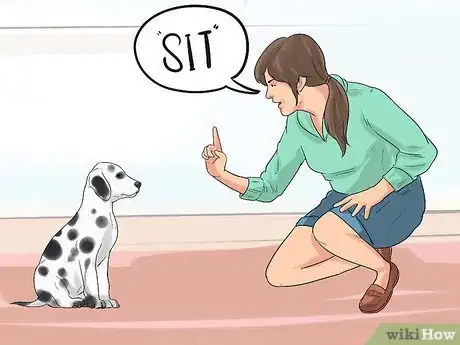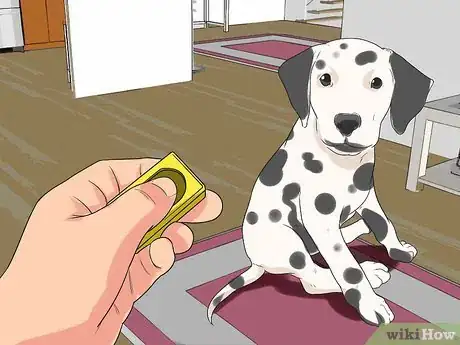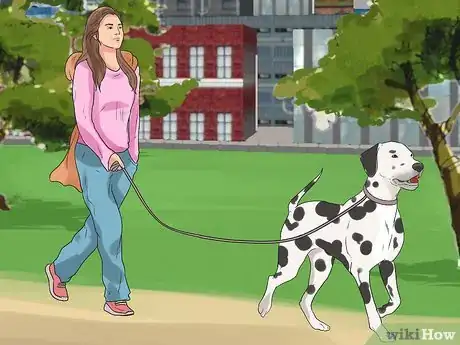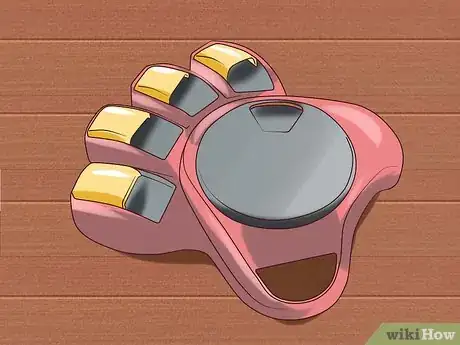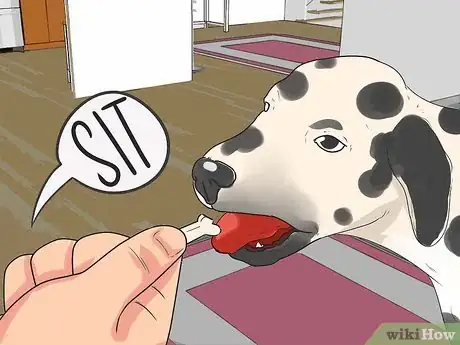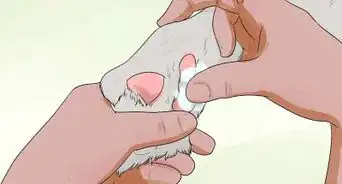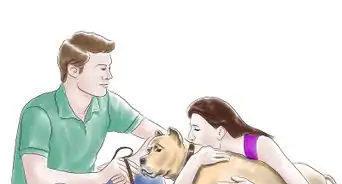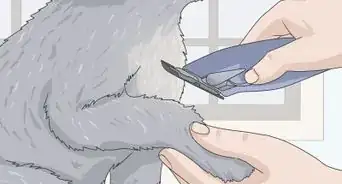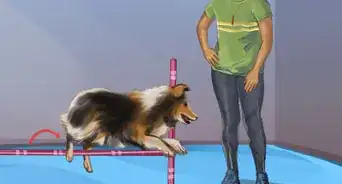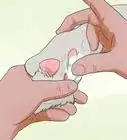This article was co-authored by Brian Bourquin, DVM. Brian Bourquin, better known as “Dr. B” to his clients, is a Veterinarian and the Owner of Boston Veterinary Clinic, a pet health care and veterinary clinic with three locations, South End/Bay Village, the Seaport, and Brookline, Massachusetts. Boston Veterinary Clinic specializes in primary veterinary care, including wellness and preventative care, sick and emergency care, soft-tissue surgery, dentistry. The clinic also provides specialty services in behavior, nutrition, and alternative pain management therapies using acupuncture, and therapeutic laser treatments. Boston Veterinary Clinic is an AAHA (American Animal Hospital Association) accredited hospital and Boston’s first Fear Free Certified Clinic. Brian has over 19 years of veterinary experience and earned his Doctor of Veterinary Medicine from Cornell University.
There are 9 references cited in this article, which can be found at the bottom of the page.
This article has been viewed 37,094 times.
Dalmatians are stunning dogs. Dalmatians were originally bred as dogs meant to trot behind a carriage, so they love exercise and can be high energy dogs.[1] The Dalmatian has a reputation for being quite a handful, so it's important to train your dog correctly and from an early age.
Steps
Developing a Training Basis From the Beginning
-
1Start training your Dalmatian immediately. From the moment you bring your eight-week old Dalmatian puppy home, he is starting to learn. He is soaking up information about his environment, so it's important you start establishing ground rules from the first day. Dalmatians have a reputation for being stubborn, so start training at the earliest opportunity.
- For example, if you do not intend to allow the dog on the couch but let him up as a puppy, intending to enforce the rules when you start training in a month or two, the poor dog will be very confused. If you want to keep your dog off the couch, start training him not to get on the couch from the moment you bring him home.
-
2Begin house training your dog when you bring him home. Though your Dalmatian might be a puppy when you bring him home, start house training him immediately. This helps your puppy avoid developing any bad habits to begin with. Show your Dalmatian where the toilet spot it.[2]
- When your dog relieves himself in the correct place, immediately praise him. This is called positive reinforcement. Your praise tells him that what he did is good, and this makes him more likely to repeat the behavior.
- To toilet train your Dalmatian you need to supervise him indoors at all time. Keep him on a leash on your wrist, or if you can't be with him, put him in his crate for short periods of time. Every hour, take your dog to the toilet spot and praise him when he relieves himself or offer a treat. Pretty soon he'll get the idea he can get treats for free just by eliminating outside.
- Simply letting the dog relieve himself without giving feedback in the form of praise is an opportunity wasted.
Advertisement -
3Use positive reinforcement to encourage good behavior. At your puppy’s young age, you are teaching him to trust you. You want your Dalmatian to want to please you when you start serious training. This means being gentle with him and using positive reinforcement. Refrain from smacking the dog, and instead praise good behavior.
- When your Dalmatian puppy misbehaves, which he will do frequently, aim to redirect his behavior onto something more appropriate. For example, if he plays tug with your pants, distract his attention onto a tug toy and then praise him for playing with that.
- It is fine to give your puppy guidance that he is wrong for tugging on the trouser with a brief, curt "No!" Then, redirect him onto the tug toy with a happy, "Good!" This uses positive reinforcement and helps him to make judgement calls about what he's going wrong and right.
-
4Socialize your dog as a puppy. Getting your Dalmatian used to people and other dogs can help prevent some behavior problems later in life. Take your Dalmatian to puppy socialization classes or dog parks so that he is confident around other dogs. This also gives your dog a chance to read other dogs' body language and learn how to react around them.[3]
- Make sure to get all your dog’s shots before taking him to public places around other dogs.
Training Your Dalmatian
-
1Research training techniques. If you have never trained a dog before, you should research how to train a dog before you begin. There are many different techniques and ways to train dogs. You can read websites, check out books from your local library, or contact pet organizations for help.
- Understanding how the training techniques work and how long they will take can help prevent frustration for you and your Dalmatian. Know that training takes awhile, so you won’t be able to train your dog overnight.
- You may discover you need to use different techniques for different trainings. You may want to crate train your dog, use the clicker method, and use treat rewards for various things.
-
2Take your dog to a dog trainer. If you have never trained a dog before, you may want to seek the assistance of a dog trainer experienced in the use of reward-based training. A trainer can give you support and guidance for training your dog. You may also consider enrolling your dog in obedience school or classes.[4]
- You may be able to find a dog training school, or you can visit a pet store. Many pet stores offer training classes for puppies.
-
3Create rules and stick to them. One key to happy training for a Dalmatian is being firm but fair. To do this, decide on the ground rules for your dog and stick to them. Voice disapproval if the dog disobeys the rules and distract him onto more appropriate behavior which you can reward. Dalmatians are headstrong dogs, so you need to make sure your are firm and consistent with your rules and training.[5]
- Changing your mind about what is appropriate or only reinforcing the rules sometimes will confuse your dog.
- For example, if he chews your shoe, firmly tell him "No!" Then, distract him and offer an appropriate chew toy with a happy "Good."
-
4Use treats to reward your dog.[6] One good way to reinforce good behavior in your Dalmatian is to use treats to reward him. When you are teaching your dog a command, like “Sit” or “Stop,” or trying to house train him, you should follow good behavior with a food treat. You can try rewarding your dog with pieces of his dog food, or you can buy treats you use to reward the behavior.[7]
- Only use treats as a reward when you are starting the training process. As your dog undergoes training and starts to learn the correct behavior, food treats should be replaced with verbal praise. Too many food treats can lead to obesity.
- When your Dalmatian starts to learn the commands, start mixing up when you give him the treat rewards. Giving your dog treats every time he completes an action can make him complacent and expect treat. Not giving him a treat every time will make him work harder for a treat since he realizes it’s not guaranteed anymore.
-
5Refrain from yelling at your dog. Yelling at your dog and getting frustrated won’t be an effective way to train your dog. Dogs can pick up on your frustration and anger, and it may upset your dog. Dalmatians are excitable, so you getting upset and yelling may cause your dog to start getting excited, start barking, and start running around.[8]
- Instead, use a firm, calm tone when you correct your dog. Remember, your dog will not learn how to act overnight. Use positive reinforcement and firm, direct commands to replace bad behavior with good behavior.
-
6Avoid physical punishment. Understand that punishing your Dalmatian will more than likely backfire. He is liable not to link the punishment to the action, like chewing the shoe. Instead, he will link the punishment to you, as the punisher. This will harm his trust in you and will make him frustrated, and possibly defensive, which could end in aggressive behavior.
- Don’t hit your dog with your hand, a rolled up newspaper, or another object. Never kick a dog.
-
7Establish short, clear commands. Work on basic commands, such as “Stop,” "Sit", "Drop", and "Come." These commands can be used to control your dog in most situations. Be consistent with the words you use. Don’t switch the command and expect your dog to give you a response.
- Make sure to limit your commands to one words. Dogs aren’t human. They don’t understand language, so don’t talk to your dog. For example, don’t say, “Please stop biting at my leg.” Instead, simply say, “Stop!”
-
8Clicker train your dog. You may want to consider clicker training your dog. This method trains the dog to associate the clicking sound of a clicker with a reward. The click designates the good behavior, which leads to a treat. This helps build a link for your dog between the good behavior and the reward.[9]
- By using clicker training, your Dalmatian will be trained to know that clicks are followed by treats. Eventually, your dog will learn that doing an action when commanded gets him rewards.
Understanding the Dalmatian Breed
-
1Learn all you can about Dalmatians. To get the most out of your training experience, you should learn everything you can about Dalmatians. Read books or websites about the breed, or talk to professional organizations or breeders. Once you understand the temperament and personality of the Dalmatian, you can be better prepared to train.
- Learning about the breed can help you know what kinds of things to expect from your dog. You can be prepared for bad habits or negative behaviors. You may learn tips on things you can do to deter bad behavior.
- Understanding the breed can also help you learn which training methods made be better for the breed.
-
2Provide your Dalmatian with plenty of exercise. Dalmatians were originally intended to walk behind carriages. This means that Dalmatians need a lot of exercise and physical activity. Dalmatians who do not receive enough exercise become bored, and a bored dog is a dog looking for trouble. Bad behavior such as chewing, barking, or unruliness will be the result if an active breed such as the Dalmatian does not receive sufficient exercise.[10]
- A Dalmatian can easily soak up two separate one hour runs a day and still have energy to spare. You can take your training to the park where you can throw a ball and have your dog learn to fetch and retrieve, running backwards and forwards in the process.
- Avoid leaving your Dalmatian for hours unattended in the yard as he will use his energy to bark at passersby or dig in the flower beds.
-
3Give your dog chew toys. Dalmatians love to chew. Be sure to provide plenty of exciting chew toys for him at all times. They also get bored easily, so giving them chew toys to keep their minds active can help prevent behavior problems.[11]
- Consider feeding your Dalmatian dry kibble inside a Kong or use a puzzle feeder so that he uses mental energy to get food, which helps to relieve boredom.
-
4Avoid over-exciting your Dalmatian puppy. Dalmatian puppies have a tendency to get over-excited. If your Dalmatian puppy gets over-excited, he will stop listening to you. This is when mouthing, biting, and general bad behavior creeps in. To prevent this, pause every 15 seconds or so during play and get your Dalmatian to calm down.
- Calming your Dalmatian is easily achieved by offering a small piece of his meal kibble as a reward. You can make this work double time by asking him to sit using the piece of kibble at the same time.
References
- ↑ http://dogtime.com/dog-breeds/dalmatian
- ↑ http://www.yourpurebredpuppy.com/training/articles/puppy-training-schedule.html
- ↑ http://www.dogbreedplus.com/dog_breeds/dalmatian.php
- ↑ http://www.dalmatianwelfare.co.uk/living-with/training/
- ↑ http://dogtime.com/dog-breeds/dalmatian
- ↑ Brian Bourquin, DVM. Veterinarian. Expert Interview. 20 December 2019.
- ↑ http://www.yourpurebredpuppy.com/training/dalmatians.html
- ↑ http://www.dogbreedinfo.com/articles/humandognonos.htm
- ↑ http://www.aspcapro.org/sites/default/files/ClickerTrainingPartners.pdf
About This Article
To train your Dalmatian, be firm yet fair by creating strict rules with short, clear commands and sticking to them. For example, if your dog chews your shoe, firmly tell it “No!”. Then, distract it with a chew toy and say “Good!” with a happy tone. Be sure to reinforce your rules every time in the same way or else your dog will get confused. You should also consider clicker training your dog, which associates the sound of a clicker with a reward. This way, your dog will learn that doing an action when commanded will earn it a treat. For more tips, like how to learn more about your Dalmatian’s temperament, scroll down!
